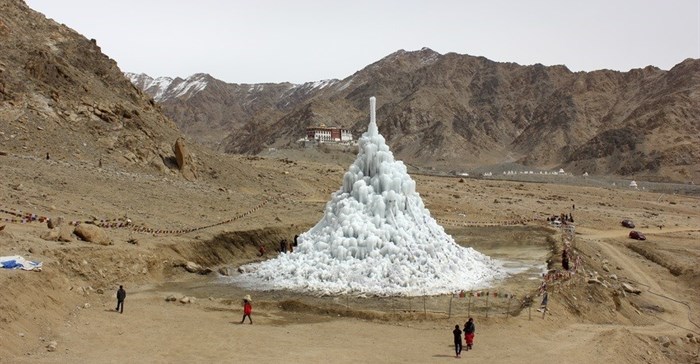
Top stories


Marketing & MediaCammy Msimango on finding her footing in South Africa’s fast-moving digital newsroom
Esther Tomorrow, MDNTV 20 hours




More news



In the last 20 years, climate change has shrunk the glaciers in the Himalayas considerably. Those that remain are not close enough to the surrounding villages to provide them with fresh water-runoff during the hot months. Inspired by an older engineer and friend who had pioneered a method of freezing fields of water high up in the mountains, Indian scientist Sonam Wangchuk developed a similar method of spraying water from nearby glacial streams into freezing air during the winter months to create artificial glaciers.
After freezing 150,000-litres of water in a six-feet-high prototype under the full glare of the sun, Wangchuk and a group of students piped water from upstream using gravity to a spot that was a little more than 3,000-metres in elevation. Erupting in a fine mist that turned to ice before it hit the ground, numerous frozen water droplets accumulated until the pyramid resembled the wax drippings of a lit candle. When it lasted until May, Wangchuk determined that these gigantic ice cones can be frozen anywhere.
Named after a style of Buddhist monument, the artificial glaciers are called ‘Ice Stupa’s’ and are meant to store water for farming and drinking for the villages until the sun melts it during the warmer months. 30 metres tall, the ice structures can provide millions of gallons of water to Himalayan residents.

But these glaciers aren’t the only ones that have experts concerned. The Swiss Alps have been worrying scientists for decades. Studies show that around two-thirds of the ice volume in the Alps has vanished since 1850. In an effort to slow down the depletion of the Rhone glacier in the Urner Alps of central Switzerland - the largest in the region - Swiss scientists took a slightly more unconventional approach and covered the melting glacier with an enormous blanket.
Locals wrapped a vast tract of the glacier ice with UV-resistant fleece to protect it from the sun. Though the blankets successfully reduce melt by 50%, it’s likely not enough to save the glacier. “This protective action is effective for a few years, but doesn’t work as an ultimate solution,” says Swiss glaciologist David Volken told Wired. “It’s not possible to cover the whole Rhone glacier with blankets.”
Though there is no one long-term solution to glacial melt, unconventional approaches and experimentation with answers can only be a good thing. It certainly was for Wangchuk, whose research won him this year’s Rolex Award for Enterprise - as well as 100,000 Swiss francs. The scientist hopes to use the funds from the award to build 20 more glaciers in the Himalayan region.

Design Indaba inspires and empowers people to create a better future through design and creativity. We are an online publication (www.designindaba.com) with an annual festival and social impact Do Tank.
Go to: www.designindaba.com